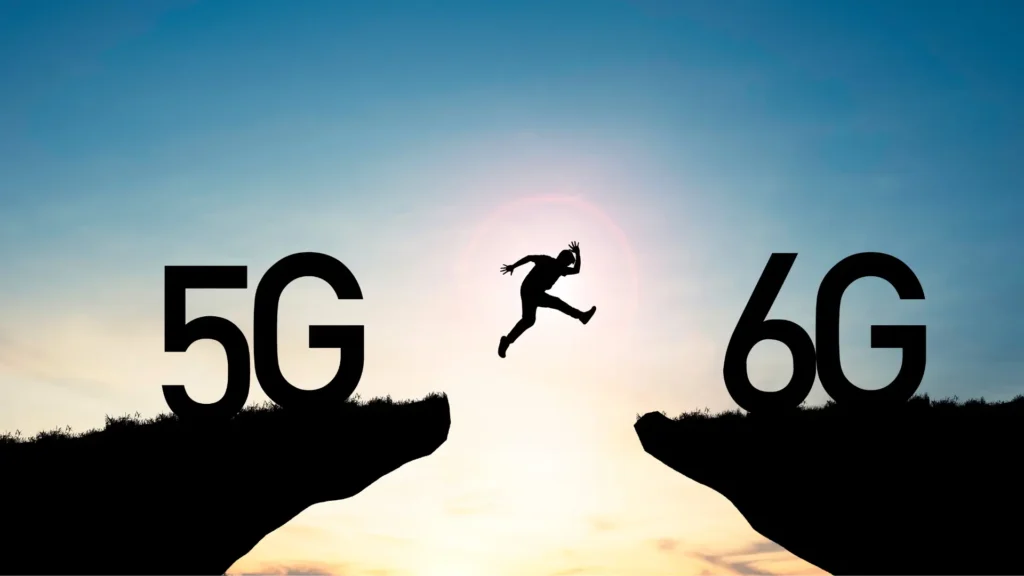Keywords: 5G vs 6G, future of mobile networks, speed comparison
Over the past few years, 5G networks have been rolling out across the globe, bringing faster speeds, lower latency, and better connectivity. But even as 5G continues to expand, the next big leap—6G—is already in development. So what exactly is the difference between 5G and 6G, and what does the future of mobile networks hold for the next decade?
Let’s break down the key comparisons, expected advancements, and how they’ll impact everyday users.

📡 5G vs 6G: A Quick Overview
| Feature | 5G | 6G (Expected) |
|---|---|---|
| Speed | Up to 10 Gbps | Up to 1 Tbps (100x faster) |
| Latency | ~1 millisecond | ~0.1 millisecond (ultra-low) |
| Bandwidth | High | Ultra-high, supports new frequencies |
| Technology | Massive MIMO, beamforming | AI integration, THz frequency bands |
| Availability | Rolling out worldwide (2020–2026) | Projected around 2030 |
📶 What is 5G? A Brief Recap
5G is the fifth-generation mobile network that offers:
- Faster downloads and streaming
- Real-time gaming and video conferencing
- More devices connected simultaneously (IoT expansion)
- Improvements in smart cities, autonomous vehicles, and remote work
Keywords in action: 5G is transforming the future of mobile networks with massive improvements in speed, reliability, and device density.
🚀 What Will 6G Bring?
Although 6G is still under research, it’s expected to be a revolution, not just an upgrade. Here’s what you can expect:
🔹 Blazing Speed
6G could offer data rates up to 1 Tbps, making it 100 times faster than 5G. Imagine downloading an entire HD movie in less than a second.
🔹 Hyper-Low Latency
While 5G brought latency down to 1 ms, 6G aims to reduce it to 0.1 ms—nearly instantaneous communication, perfect for robotics, VR/AR, and autonomous tech.
🔹 Terahertz (THz) Frequencies
6G will move beyond the millimeter wave and explore THz bands, providing wider bandwidths and faster transmission speeds.
🔹 AI & Edge Computing
6G is expected to integrate AI natively, enabling self-optimizing networks, intelligent routing, and enhanced real-time processing at the edge.
🔹 Holographic & Immersive Tech
Think beyond video calls—6G will power holographic communication, XR experiences, and brain-computer interfaces.
🛠️ Practical Impact: What Will It Mean for You?
✅ Real-Time Everything
From remote surgeries to real-time language translation, 6G will bring futuristic capabilities to everyday life.
✅ Smart Environments
Homes, cities, and workplaces will become intelligent ecosystems, thanks to ultra-fast, low-latency connections.
✅ Next-Gen AR/VR
6G will support lifelike virtual reality and fully immersive experiences, reshaping entertainment, education, and work.
✅ Massive IoT
From smart cars to wearable health tech, 6G will handle millions of connected devices per square km.
📅 Timeline: When Will 6G Arrive?
| Year | Milestone |
|---|---|
| 2023 | Global research collaborations begin |
| 2025 | Early 6G prototypes under testing |
| 2028 | Standardization by ITU and 3GPP expected |
| 2030 | Commercial 6G rollouts begin globally |
So, while 5G is here today, 6G is the future—expected to take off around 2030.
⚖️ 5G vs 6G – At a Glance
- 5G improves existing mobile internet
- 6G is about unlocking new realities—AI-driven, immersive, intelligent networks
- 5G connects people
- 6G connects everything: devices, humans, virtual worlds
🏁 Final Thoughts
The 5G vs 6G debate isn’t about choosing one over the other. 5G is already transforming industries, but 6G is where science fiction starts becoming science fact. As research advances, we’ll witness the future of mobile networks evolve into intelligent, lightning-fast systems that shape how we live, work, and connect.
So buckle up—the next decade will be one of the most exciting periods in tech innovation.
